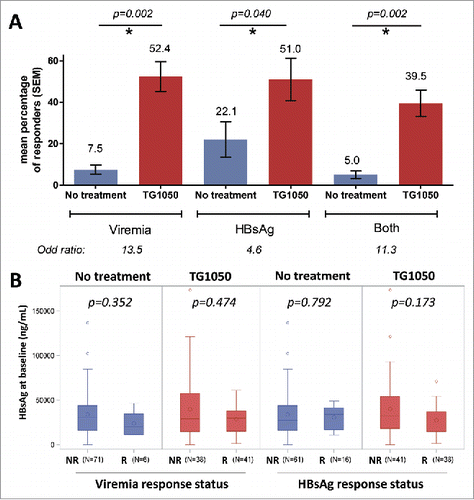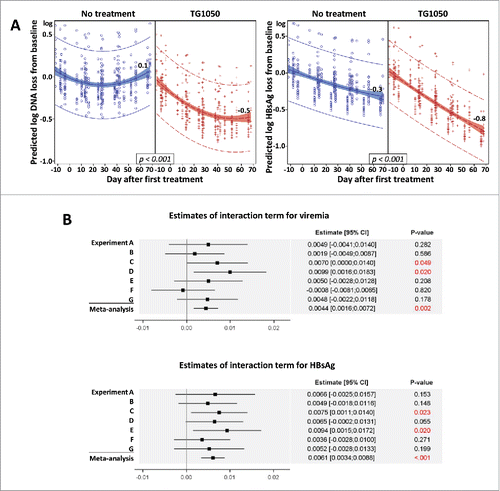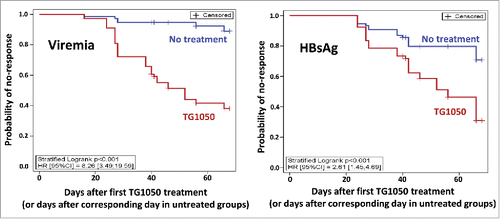Figures & data
Table 1. Study groups. Experimental conditions are detailed in the Materials and Methods section. Each experiment included 9 to 15 mice per group, which were sacrificed 11–15 weeks post AAV-HBV injection. At least 3 time points after TG 1050 administration were monitored for viral parameters. Mean HBsAg levels at baseline for each study group are shown (with standard deviation).
Figure 1. Responder mice were defined as a mouse displaying a decrease in HBV-DNA (viremia), circulating HBsAg levels or both together higher than 0.5 log from baseline value for two or more time points during the study. (A) Overall response rate in seven experiments (mean percentage from 7 individual experiments). P-values for responders in TG1050 treated (red) and not-treated (blue) mice are shown above the graph. The increase in the chance (odd-ratio) to present a response (decrease in viremia, HBsAg or both) when treated with TG1050 is shown below the graph. (B) Circulating HBsAg levels before treatment in non-responder (NR) and responder mice (R), for viremia (left) or HBsAg (right). Values of individual mice from all 7 seven experiments are analyzed together. N is the number of mice analyzed in each bar. The median is indicated by a horizontal line, the mean by a big circle. P-values for responders versus non-responders are shown above the plots.

Figure 2. (A) Global mixed model analysis. Quadratic regression on predicted loss from baseline. Each blue circle (no treatment) or red plus (TG1050 treatment) represents the predicted DNA (left) or HBsAg loss (right) from baseline of one mouse at one time point. Quadratic regression with 95% confidence intervals are shown, as well as predicted log loss for viremia and HBsAg at D68 after first treatment (or corresponding day in untreated groups). (B) Estimates of interaction term (indicating a different evolution over time according to treatment received) for viremia (top) and HBsAg (bottom) are shown for 7 individual experiments (A-G) and together (meta-analysis), analyzed using the fixed effect model and weighting estimation with the inverse-variance. Estimates are shown by a square with 95% confidence interval (line). P-values are given for each experiment and for meta-analysis.


